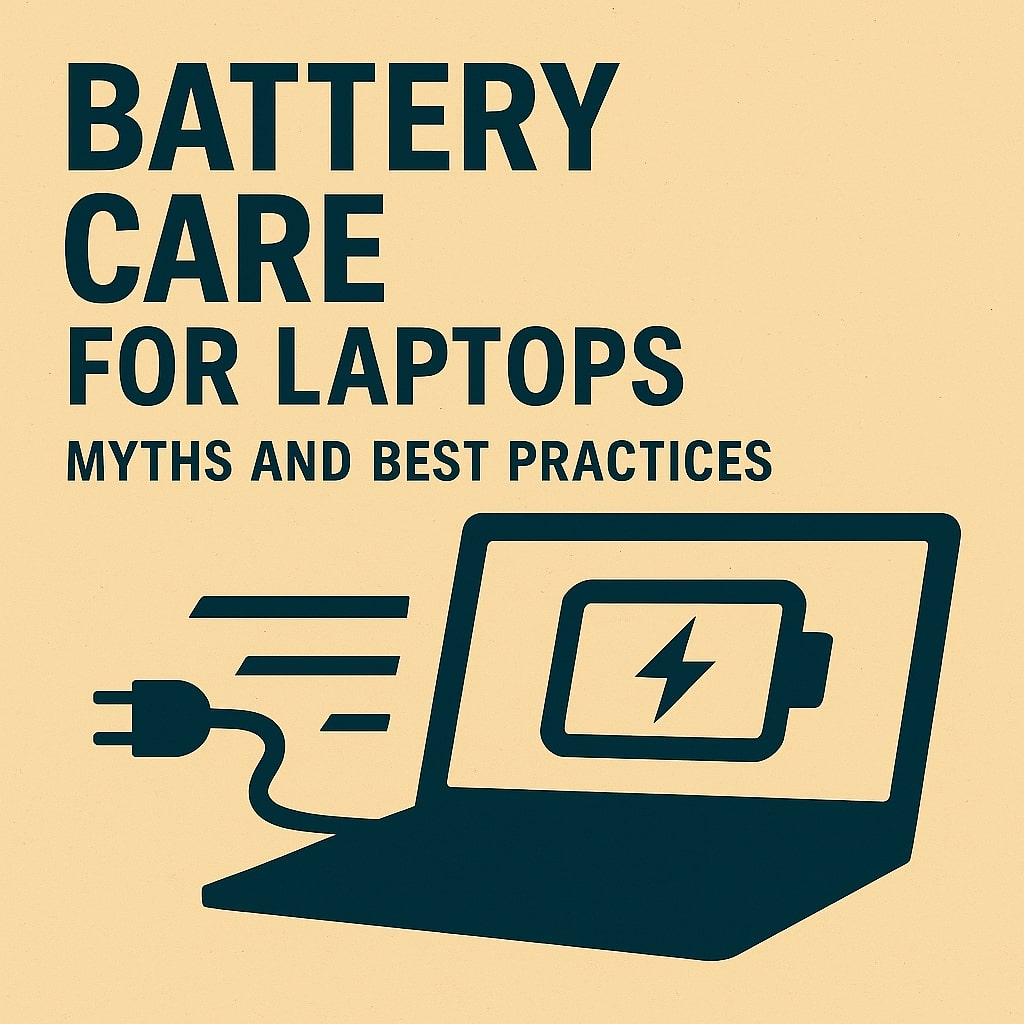Posted On 07 Oct 2025
Laptop batteries are essential to portable computing, yet many users unknowingly shorten their battery’s lifespan by following outdated advice. Understanding the myths and best practices around battery care can help extend performance and avoid premature failure.
One common myth is that you should always let your battery drain completely before recharging. This was true for older nickel-based batteries, but modern lithium-ion batteries perform best when kept between 20% and 80% charge. Frequent full discharges can actually reduce battery health over time.
Another misconception is that leaving your laptop plugged in constantly will overcharge the battery. In reality, most modern laptops have built-in charging management systems that stop charging once the battery reaches 100%. However, keeping it plugged in 24/7 can generate heat, which is a major enemy of battery longevity. If you use your laptop mostly at a desk, consider removing the battery (if possible) or using a cooling pad.
Temperature plays a critical role in battery health. Avoid exposing your laptop to extreme heat or cold, and never leave it in a hot car or direct sunlight. Ideal operating temperatures range between 50°F and 95°F (10°C to 35°C).
Best practices include using the manufacturer’s recommended charger, avoiding cheap third-party adapters, and updating your system firmware when available. Many laptops also offer battery health settings or eco modes—enable these to reduce wear during long sessions.
Finally, don’t obsess over battery percentage. Occasional full charges and discharges are fine, but consistency and moderation are key. With proper care, your laptop battery can last several years without significant degradation.
By debunking myths and following smart habits, you’ll enjoy longer battery life, fewer replacements, and a more reliable computing experience. Battery care isn’t complicated—it just requires a little awareness and routine attention.









